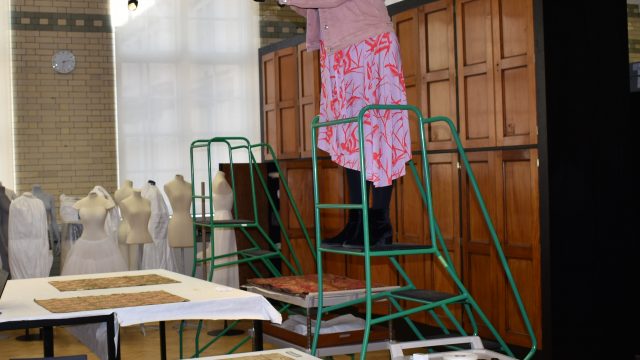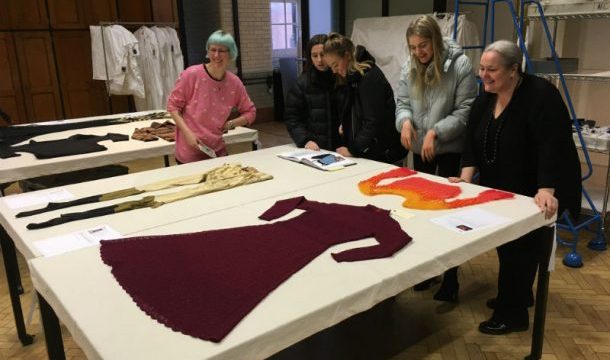I covered headwear a couple of posts ago, so logically it must be time to turn our sartorially-peckish peepers to the ticklish bases of our pillars of flesh and blood and bone: the feet.
VERY natty boots (T.110:1, 2-1993) © Victoria & Albert Museum, London
The V&A’s shoe collection is very large and very expansive. It represents over two millennia of methods we humans have used to cover our trotters, from a pair of Egyptian open shoes made of reed and papyrus, dating to 1550-1070 BC, right up to contemporary examples, such as these Chinese slippers. By my calculations (though I admit I am anything but a reliable mathematician) there are more than 3700 individual shoes in the Textiles and Fashion collection. These have been collected together with almost 400 shoes from the Asian Department to create a homogenous group, ideal for study and very satisfying for anyone interested in the creation of coactive relationships.
All of our footwear has gone into a dedicated shoe room, in these quite imposing-looking cupboards (surely a deterrent for any thief touched by clog-avarice), and the ability to view and access them has been very much improved. While this mini-project was underway, we were forced to ask ourselves a few questions about the composition of the collection, such as exactly how many pairs of Victorian ladies’ ankle-boots does one Museum need? The answer, citizens of the internet, is over one-hundred.

Shoe cupboards in the shoe room © Victoria & Albert Museum, London
Noting my reference to the period 1837-1901, you may yourselves ask a question of exactly how our sandals, Oxfords, riding boots, heels, pattens, brogues (and so on) are now kept. Regular readers might already have guessed that the answer is chronologically. Now, when a cupboard is opened, the one who unlocks the portal is met with an overview of an entire decade’s fine footwear, which is just another reason to be excited about our beautiful new storage.

Lined and spaced © Victoria & Albert Museum, London
Remember to keep an eye on the website for our new shoe hub, where you’ll find information about the collection, its breadth and details about some of the designers represented within it.
The Clothworkers’ Centre for the Study and Conservation of Textiles and Fashion is part of FuturePlan and will be open to visit by appointment later this year.


